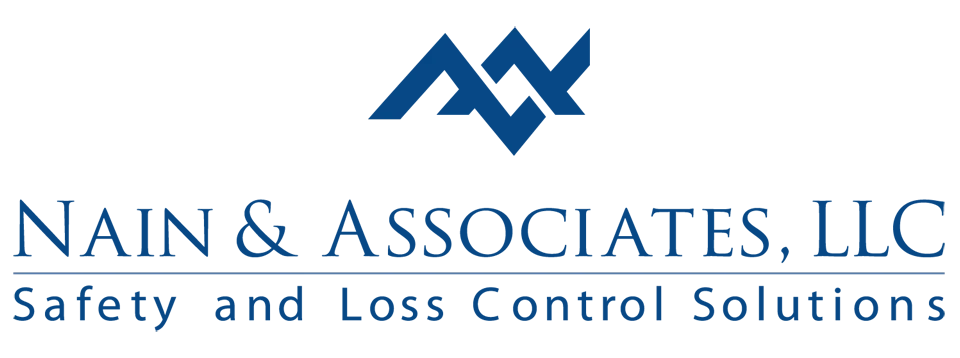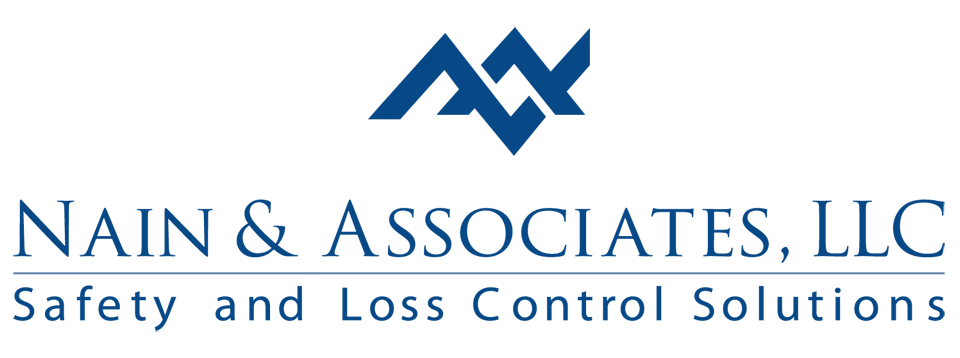

(828) 471-4317
Now Offering Spanish Safety Training!

Now Offering Spanish Safety Training!
OSHA Electronic Recordkeeping: Who Must Submit Forms 300/301 by March 2—and How
OSHA Forms 300/301
What the Rule Requires in 2024–2025

OSHA’s electronic recordkeeping rule requires certain establishments to submit injury and illness data annually through the Injury Tracking Application. The filing covers calendar-year records and is due March 2. Understanding which forms apply, and which locations qualify, is essential for accurate, defensible compliance this year.
Three forms matter: the 300 Log, 301 Incident Report, and 300A Summary. OSHA already requires posting the 300A on-site from February through April; electronic submission is a separate obligation. Data must match established records, NAICS coverage, and headcount determinations at the specific establishment, not organization-wide.
Newer requirements affect more industries, including many manufacturing, warehouse, healthcare, and transportation categories. Prepare by confirming NAICS codes, counting peak employees per establishment, and verifying calendar-year record completeness. Build controls for privacy cases, temp labor, and multi-employer worksites, then schedule a pre-filing review before certification.

Who Must Submit and Who Is Exempt
Submit 300A only: establishments with 20–249 employees in industries listed by OSHA as historically high-risk. Submit 300A, 300, and 301: establishments with 100+ employees in designated Appendix B industries. Establishments with 250+ employees in all industries required to keep records must continue submitting 300A. Low-hazard, partially exempt industries still keep limited records and are not required to submit electronically unless specifically notified by OSHA or statute.
Headcount is based on the peak number of employees at the establishment during the year, including part-time, seasonal, and temporary workers supervised on site. Submissions are establishment-specific, not corporate roll-ups. If you share space with multiple establishments, determine whether each meets a threshold. Verify NAICS codes tied to each establishment’s operations; corporate SIC histories don’t control. For mergers or divestitures, retain records and ensure correct entity files.
Some employers are partially exempt from keeping OSHA injury and illness records due to low hazard classifications or size; they may still be asked to respond to surveys. For covered employers, align your log practices, 301 narratives, and retention with your documentation and procedures Confirm privacy case handling, employee access rights, and state-plan variations so submissions remain consistent, complete, and defensible across facilities and calendar years.
What Data You Upload (and Privacy)

Electronic submissions include establishment information, 300A summary totals, and, for designated industries, case-level 300 and 301 data elements. OSHA excludes identifying details from public release, but you must still protect confidential medical information when creating records and completing forms, especially for privacy cases and incidents.
For Form 300, you report classification, days away or restricted, and outcome fields that match the paper log. For Form 301, you share incident descriptions and sources without names or addresses. Review narratives for confidentiality, accuracy, clarity, avoiding causes and diagnoses not supported in records.
Public posting will allow users to view case-level summaries, improving transparency across industries. Expect more benchmarking, client audits, and insurer reviews using your submitted data. That raises the value of sound evaluation, consistent coding, and corrections when errors are found in logs, summaries, or submissions.
Electronic submissions include establishment information, 300A summary totals, and, for designated industries, case-level 300 and 301 data elements. OSHA excludes identifying details from public release, but you must still protect confidential medical information when creating records and completing forms, especially for privacy cases and incidents.
For Form 300, you report classification, days away or restricted, and outcome fields that match the paper log. For Form 301, you share incident descriptions and sources without names or addresses. Review narratives for confidentiality, accuracy, clarity, avoiding causes and diagnoses not supported in records.
Public posting will allow users to view case-level summaries, improving transparency across industries. Expect more benchmarking, client audits, and insurer reviews using your submitted data. That raises the value of sound evaluation, consistent coding, and corrections when errors are found in logs, summaries, or submissions.

Protect privacy by reviewing 301 narratives for indirect identifiers, using the privacy case checkbox when applicable, and training supervisors on what belongs in medical versus OSHA files. Establish a review gate before submission to validate codes, dates, and counts. Document any corrections, and maintain a change log that links revised entries to supporting records, emails, or determinations made during return-to-work and case management meetings for clarity and defensibility. Retain supervisor notes and employee statements securely.
Integrate recordkeeping into safety written programs case decision trees, privacy criteria, access rules, and annual submission responsibilities. Align contractor management so host supervisors capture cases for supervised temp labor. Provide alternate methods for reporting injuries on night shifts or in the field. Schedule internal audits each January to reconcile logs, training rosters, and headcounts, verify NAICS codes, and confirm that 300A summaries post on time and match the electronic submission—and certifications before signoff.
How to File via OSHA’s ITA
Create or access an OSHA Injury Tracking Application account, then add each establishment with correct name, address, NAICS, and headcount. Import prior-year profiles where available. Enter the 300A totals and, when required, the 300 and 301 elements. Validate that totals reconcile to your logs before moving forward to certification. If you manage many sites, prepare a CSV upload, test the template, and stage internal approvals before submission.
Choose a submission method: webform for a few establishments, CSV for larger portfolios, or API integration for enterprise systems. Assign a submitter who can attest to accuracy. Use the preview and error checks to catch coding mismatches early. Save receipts and confirmation numbers, and archive exported files with your annual OSHA records. Retain screenshots of each step and store them with signed 300A postings for audit
Before March 2, reconcile all establishments, cross-check headcounts, and verify temp-labor supervision. Run a quick internal drill to confirm access, roles, and cutoffs; pairing this with periodic mock OSHA inspections improves accuracy and response under pressure. After filing, schedule a debrief to capture issues, assign fixes, and update next year’s calendar. Close open corrections, document lessons learned, and refresh templates, instructions, and distribution lists accordingly organizationwide.
Common Mistakes and How to Avoid Them
Missing establishments or wrong NAICS codes. Fix by reconciling HR and site lists before filing. Confirm names match records. Validate the headcount and whether thresholds apply. Keep a checklist for shared campuses and mobile crews so each qualifying establishment is entered once, and on time.
Inconsistent logs and summaries. Audit totals, case classifications, and days before entering data. Verify that restricted versus away-from-work days align across Forms 300 and 300A. Check temp-labor supervision and privacy cases. When errors are found, correct the log, regenerate the 300A, and repeat submission review.
Late filings. Build a calendar with preparation milestones in January and signoff in February. Use reminders and backups for the submitter role. After submission, archive confirmations alongside 300A summaries and training records. Keep procedures current so turnover, reorganizations, or acquisitions do not interrupt timely reporting.

If a state plan adds its own portal or timelines, follow both systems. Treat the federal ITA as the minimum unless the state requires direct submission. For multi-state companies, centralize guidance but let sites own day-to-day entries. Provide short scripts for supervisors explaining who counts on the log and when a case becomes recordable. Share examples for borderline cases, like first aid versus medical treatment, and confirm restricted duty start dates align with payroll systems.
During acquisitions or openings, decide establishment boundaries early and assign NAICS codes before production begins. Map contractors, temps, and staffing agencies to supervision lines so cases land on the right log. Keep contacts current for claim administrators and occupational clinics, and verify that return-to-work notes flow to recordkeeping promptly. Schedule quarterly reviews with HR, safety, and operations to reconcile rosters, headcounts, and ownership changes, ensuring ITA profiles, users, and authorizations stay accurate for each establishment.
How Nain & Associates Can Help
Nain & Associates, LLC helps employers build reliable recordkeeping systems that withstand audits and client reviews. We assess your establishments, NAICS assignments, and headcount thresholds, then create clear procedures for logging, privacy cases, and electronic submission. Our bilingual trainers upskill supervisors and coordinators so decisions are consistent, documented, and ready for March deadlines. We also map responsibilities, retention schedules, and controls that integrate with everyday operations seamlessly.
We can build your calendar and filing playbook, test CSV uploads, and rehearse submissions to catch issues early. Our team reviews 300 and 301 narratives for clarity and confidentiality, aligns logs with workers’ compensation data, and standardizes secondary container and privacy-case handling, reducing rework while improving data quality and defensibility. For multi-site portfolios, we centralize guidance, train local champions, and verify profiles, users, and permissions annually.
When deadlines approach, we provide surge support to reconcile logs, prepare uploads, and certify submissions without disrupting production. After March 2, we run a lessons-learned review, document improvements, and update next year’s timeline. Ready to move? Call (828) 471-4317 or request services to launch a confident, compliant, and sustainable process. We coordinate with HR, claims, and IT, and maintain artifacts that demonstrate diligence during audits and reviews.
Have Questions About What We Offer?
To learn more about our services, contact us today!
Have Questions About What We Offer?
Contact us to learn more about our services

Speak with a
safety Specialist
Workplace Safety Training & Consulting Experts for
Charlotte, Hickory, Asheville, North Carolina and
the Southeast for since 2005!
Design By: Customers.Plus
© 2025 | Nain & Associates LLC


